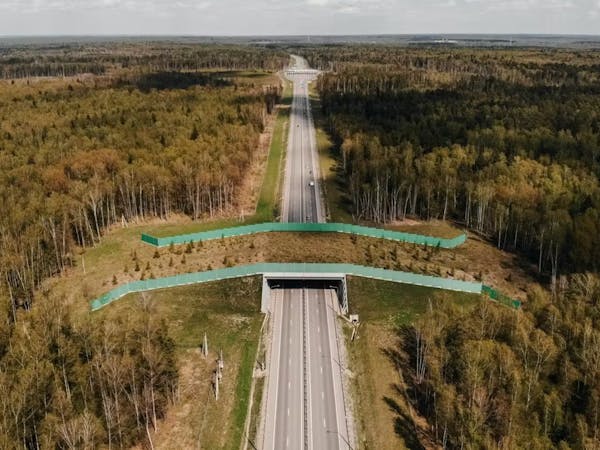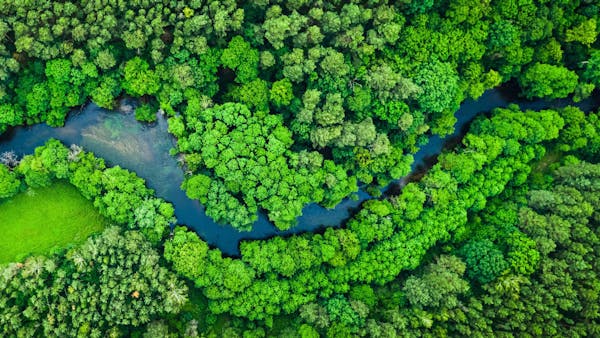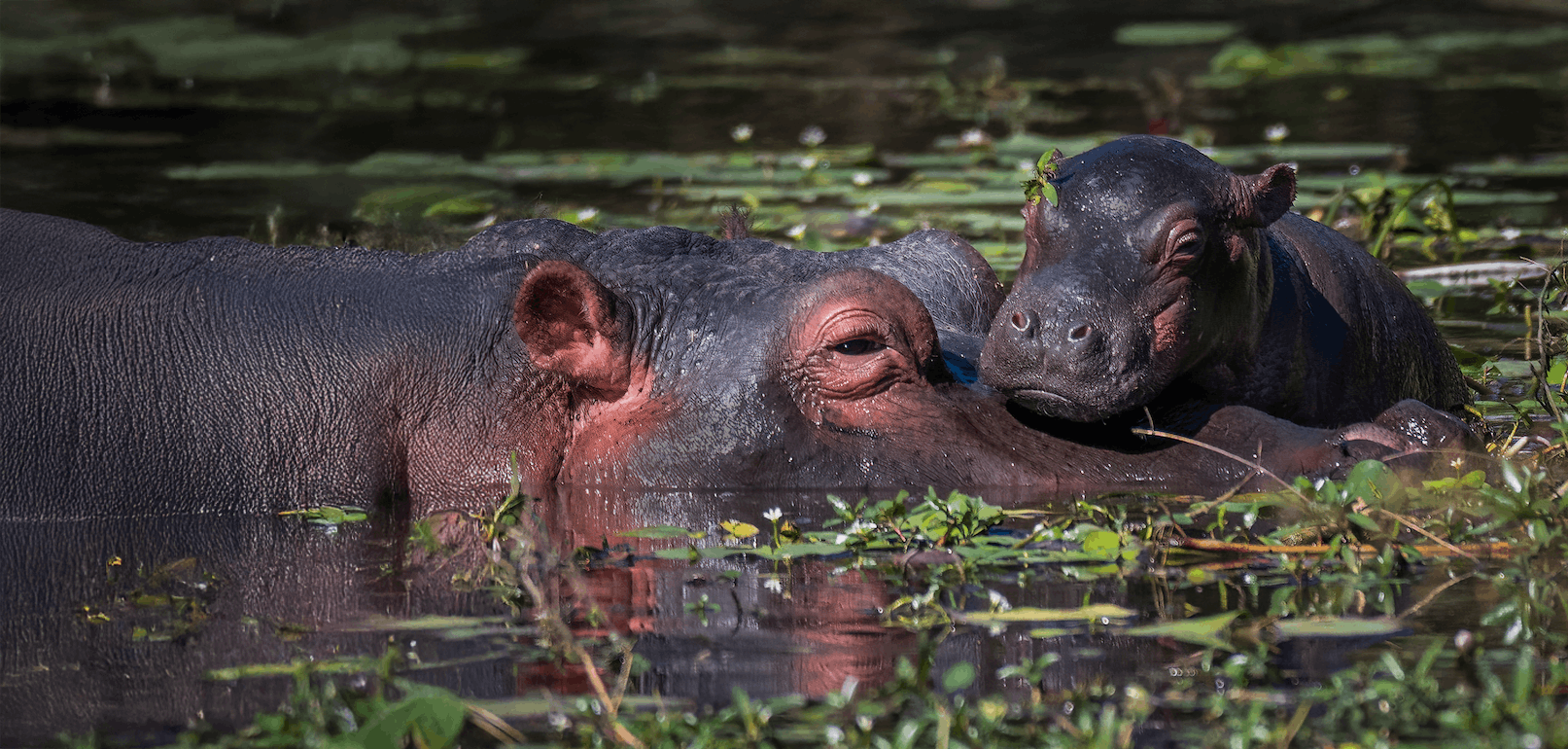A groundbreaking new global initiative for ecological connectivity launches at UN wildlife meeting
In a significant stride towards wildlife conservation, an ambitious new initiative aimed at safeguarding and enhancing the connectivity of natural habitats crucial for migratory species was launched at the United Nations wildlife meeting in Samarkand, Uzbekistan. This groundbreaking effort, named the Global Partnership on Ecological Connectivity (GPEC), aims to identify, protect, and link critical areas essential for the survival and migration of wildlife.
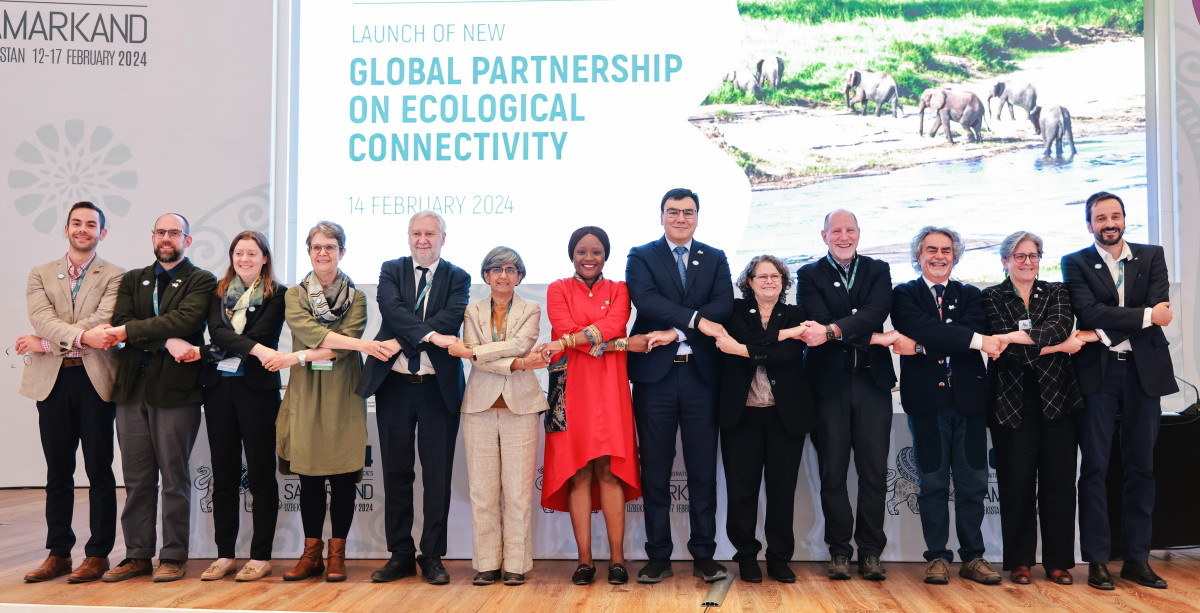
Pictured: Gabriel Oppler, International Policy & Partnerships Specialist, Center for Large Landscape Conservation; Aaron Laur, International Connectivity Program, Policy & Partnerships Manager, Center for Large Landscape Conservation; Frances Davis, Senior Programme Officer, UNEP-WCMC; Ingrid Coetzee; Director, Biodiversity, Nature & Health, ICLEI Africa and Global Cities Biodiversity Center; Senator Ronan Dantec, President, Climate Chance Association; Rafael Antelo (Ph.D.) Wildlife Connect Leader and PACHA Coordinator, WWF; Madhu Rao, Chair, IUCN World Commission on Protected Areas; Dr Musonda Mumba , Secretary General of the Convention on Wetlands; H.E. Aziz Abdukhakimov, Minister of Ecology, Environmental Protection and Climate Change of Uzbekistan; Amy Fraenkel, CMS Executive Secretary; Gary Tabor, CEO, Center for Large Landscape Conservation; Fernando Spina, CMS COP-appointed Councilor for Ecological Connectivity, Katharine Newman, Vice-President sustainable infrastructure; WWF US. Image credit: © Anvar Zokirov
A coalition for conservation
The initiative emerges in response to the alarming threats of habitat destruction, degradation, and fragmentation, identified as primary challenges facing migratory species worldwide. The unveiling of GPEC coincided with the 14th Meeting of the Conference of the Parties (COP14) to the Convention on the Conservation of Migratory Species of Wild Animals (CMS), marking a pivotal moment in international conservation efforts.
“Connectivity is a core element of scaling conservation action to achieve ambitious global biodiversity and climate goals. The GPEC is an extremely timely initiative, and will catalyze action toward connected systems of protected and conserved areas globally.” — Madhu Rao, Chair, IUCN World Commission on Protected Areas
The genesis of GPEC was motivated by the findings and recommendations of the flagship CMS report, the State of the World's Migratory Species, unveiled just days before the launch. The report highlighted the urgent need for actions to identify, protect, connect, and manage key sites for migratory species effectively. GPEC aims to translate these recommendations into action, focusing on ecological connectivity to support the survival and health of migratory species across the globe.
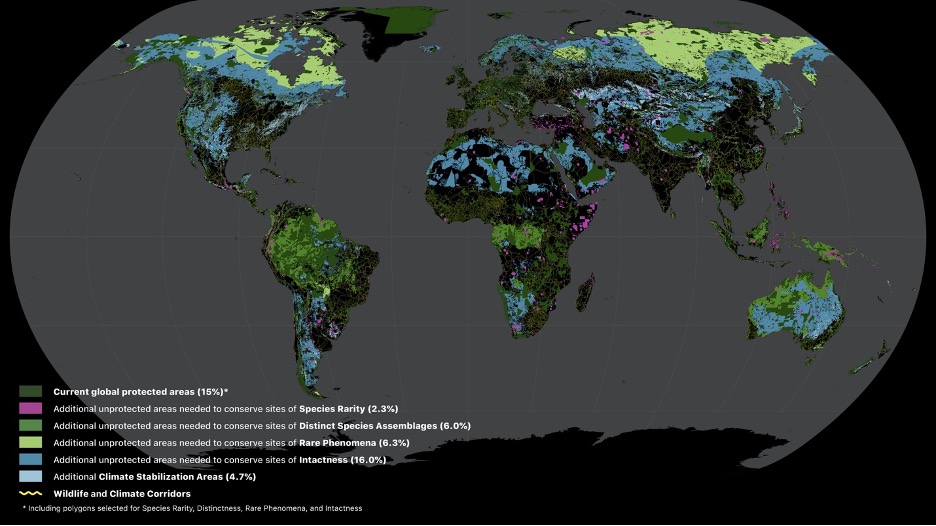
One Earth's Global Safety Net, a blueprint for saving life on Earth, identifies potential wildlife and climate corridors to connect intact habitats. These are represented by the yellow lines on the map. Image credit: Globaia
The importance of connectivity
Wildlife Connectivity, a sub-pillar of One Earth's Nature Conservation pillar, encompasses the unimpeded movement of species and the natural processes essential for life on Earth. This concept is critical not only for the conservation of migratory species but also plays a significant role in broader biodiversity conservation, land restoration, and climate change mitigation efforts across various ecosystems.
“Ecological connectivity has gained greater prominence over the years thanks to collaboration among countless dedicated individuals. This Global Partnership now brings together institutions and their collective abilities to scale up connectivity solutions to safeguard nature in a dynamic world.” — Gary Tabor, CEO, Center for Large Landscape Conservation
The initiative aligns with global conservation priorities, including those outlined in the UN General Assembly Resolution "Nature Knows no Borders," adopted in 2021. It emphasizes the importance of international and transboundary cooperation to maintain and enhance ecological connectivity, highlighting the initiative's relevance and urgency.
%2C%20breeding%20herd%2C%20roaming%20in%20a%20freshwater%20marsh%2C%20aerial%20view%2C%20Okavango%20Delta%2C%20Botswana%2C%20Africa%20-%20Depositphotos_339584170_XL%20(1).jpg)
African Elephants (Loxodonta africana), breeding herd, roaming in a freshwater marsh, Okavango Delta, Botswana, Africa. Image credit: Depositphotos 339584170
GPEC's work will focus on four main areas:
- Data Research and Monitoring
- Policy and Legislation
- Uptake and Implementation
- Awareness Raising and Outreach
These efforts aim to integrate and analyze scientific data, support evidence-based decision-making, encourage the application of connectivity conservation strategies, and increase public support for ecological connectivity.
The partnership also seeks to mobilize necessary funding to implement these critical actions, contributing directly to the goals of the Kunming-Montreal Global Biodiversity Framework and enhancing global biodiversity conservation efforts.
As the world grapples with environmental challenges, the launch of GPEC at the UN wildlife meeting represents a hopeful step forward in the collective effort to protect our planet's natural heritage and ensure a sustainable future for migratory species and ecosystems worldwide.
Read the Full Report: State of the World's Migratory Species%2C%20crossing%20a%20marsh%20area%2C%20flying%20Cattle%20Egrets%20(Bubulcus%20ibis)%2C%20Okavango%20Delta%2C%20Botswana%2C%20Africa%20-%20Depositphotos_339585504_XL%20(1).jpg?auto=compress%2Cformat&w=1440)

